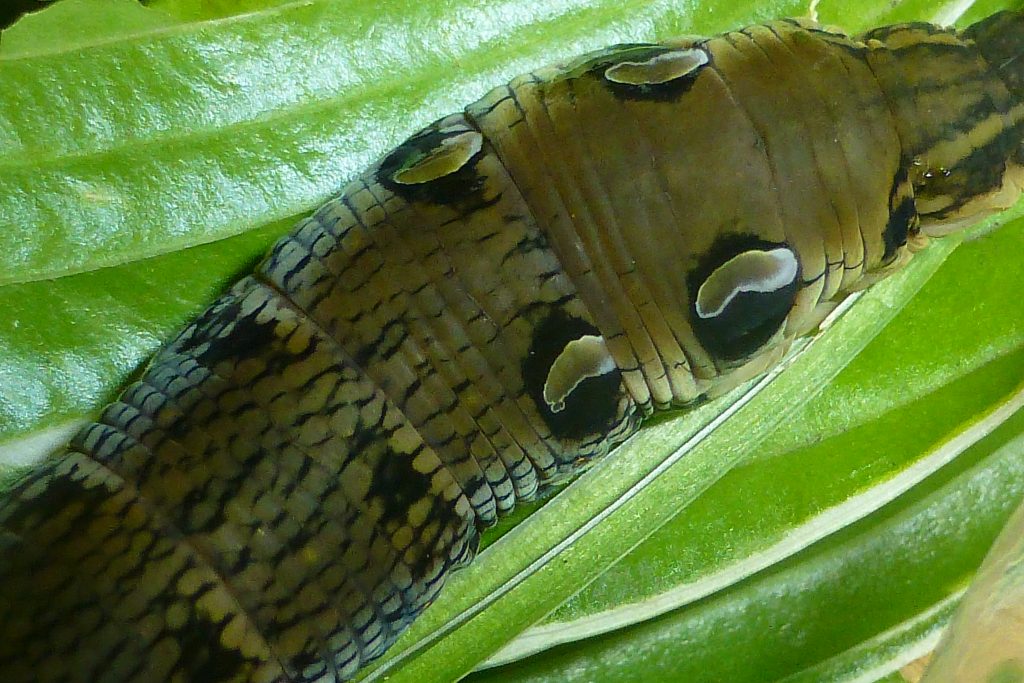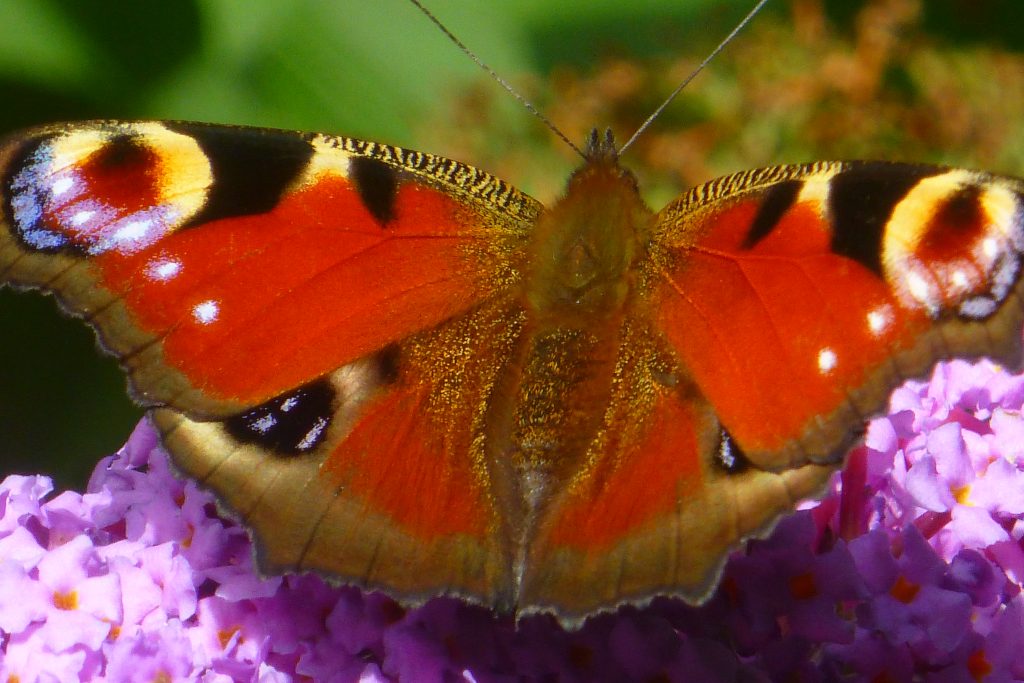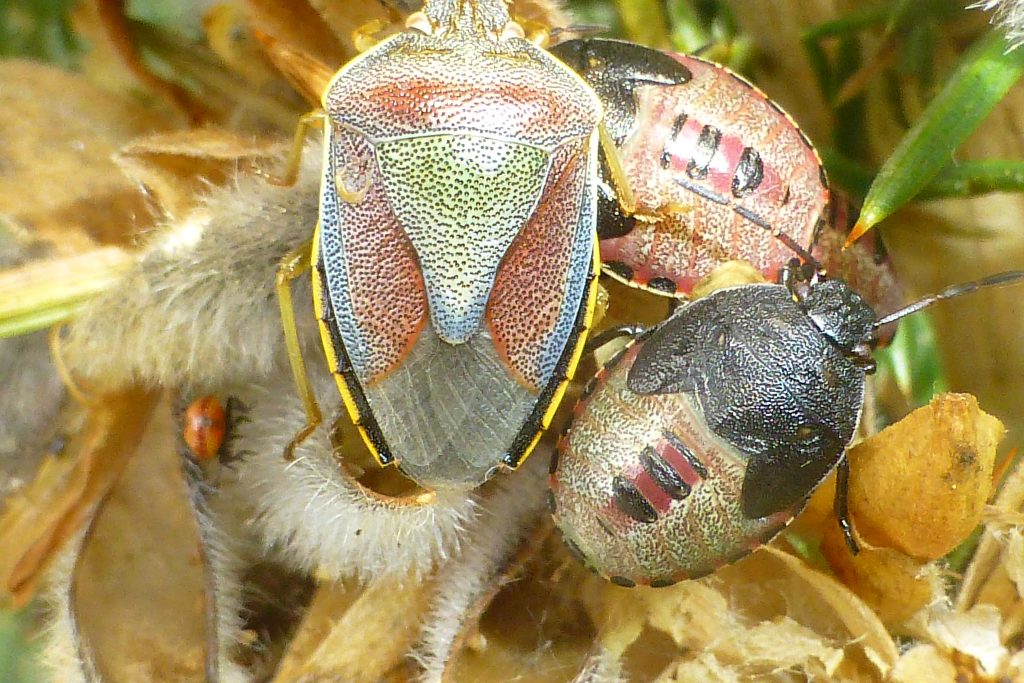August was quite a bright sunny month especially in the second half, with 23rd being a particularly glorious warm day. Eight more species were added to the Garden’s list, bringing it up to 772.
Birds August was a quiet month for birds in many ways, with only 33 species being recorded. Those were quite hard work as there was virtually no birdsong apart from Robins and Wood Pigeons, so passerine bird records were based on calls and the relatively few actual sightings. Young Sparrowhawks were noisy during the first week but had dispersed out of the Garden by the middle of the month. House Martin was recorded on 1st and Swallow on 26th. Tawny Owls hooting in daytime were heard on 17th and 20th. The full list of species recorded in August was: Blackbird, Blackcap, Black-headed Gull, Blue Tit, Bullfinch, Carrion Crow, Chaffinch, Chiffchaff, Coal Tit, Dunnock, Feral Pigeon, Goldcrest, Goldfinch, Great Spotted Woodpecker, Great Tit, Greenfinch, Grey Heron, Herring Gull, House Martin, Lesser Black-backed Gull, Long-tailed Tit, Magpie, Mallard, Moorhen, Oystercatcher, Robin, Siskin, Sparrowhawk, Stock Dove, Swallow, Tawny Owl, Wood Pigeon, Wren.

Head portion of Elephant Hawkmoth caterpillar (Deilephila elpenor), 27 August 2015. Photo Robert Mill.
Insects and other invertebrates: August was a relatively good month for butterflies with six species recorded: Peacock (17th and 31st: see top photo), Comma (4 dates throughout the month), Small Tortoiseshell (6th), Small White (nine dates), Green-veined White (five dates) and Meadow Brown (7th). This compares very well with last year which was also warm and sunny. Among the moths, the month’s highlight was a superb Elephant Hawk Moth caterpillar (27th: see photo above)) – a new Garden record. Riband Wave, Nettle Tap and some leaf-mining moths were also recorded. Twenty-one hymenopteran species (bees, wasps, ants, sawflies etc.) were recorded, one more than in July. Once again Wool Carder Bees were present throughout the month. Field Digger Wasps were seen on several dates. The Knopper Gall, formed by the gall-wasp Andricus quercuscalicis, was a new Garden record. Two dragonfly species were seen: Common Darter on 6th (the first Garden record since at least 2008) and a rather atypical Common Hawker on 27th. Thirteen hoverfly species were seen, with by far the majority of records being in the second half of the month. Numbers, however, continued to be low, especially with respect to Marmalade Hoverfly which was in great abundance two years ago. As in July, 17 species of leaf-mining fly were recorded, one of them (Phytomyza glechomae, on leaves of Ground Ivy), being a new Garden record. Phytoliriomyza melampyga, whose hosts are species of balsam, was recorded on the South African species Impatiens tinctoria, possibly the first time it has been reported from this host. Within the Garden it has previously only been recorded on Impatiens parviflora. Few other flies were recorded but they included the crane-fly Limonia nubeculosa (31st) which was first recorded at the Garden last year. Gorse Shield Bug (20th to end of month) was a new Garden record (see photo below); two other shield bug species (Hawthorn Shield Bug and Red-legged Shield Bug) were also seen. Among beetles, the rove beetle Stenus cicindeloides was another new Garden record while Seven-spot Ladybirds were seen on two dates (17th and 21st). Leiobunum rotundum, yet another new Garden record (26th; also 27th and 28th — and yet another new record found at the back door of the Herbarium building!) was added to the growing list of Harvestmen species known from the Garden while the Garden’s first pseudoscorpion species, probably Neobisium carcinoides, was found on 24th in the Temperate House. A mite forming galls on the leaves of goosegrass (Galium aparine), Cecidophyes rouhollahi (on 18th), completed August’s trio of new arachnid records for the Garden. Nine other species of gall-forming mite were also seen, as well as Cucumber Spider (24th) and a red spider mite.


